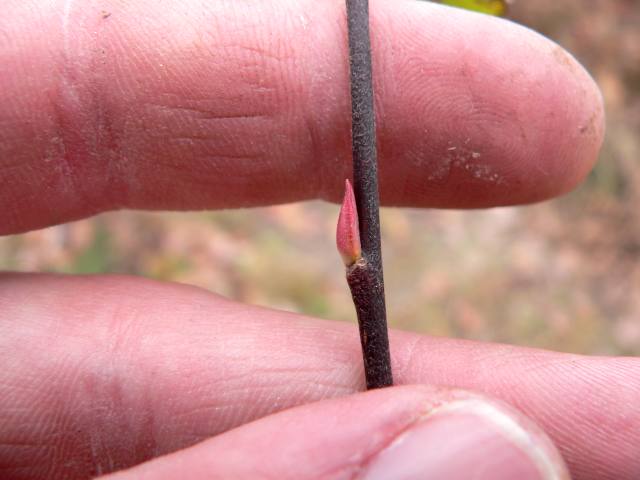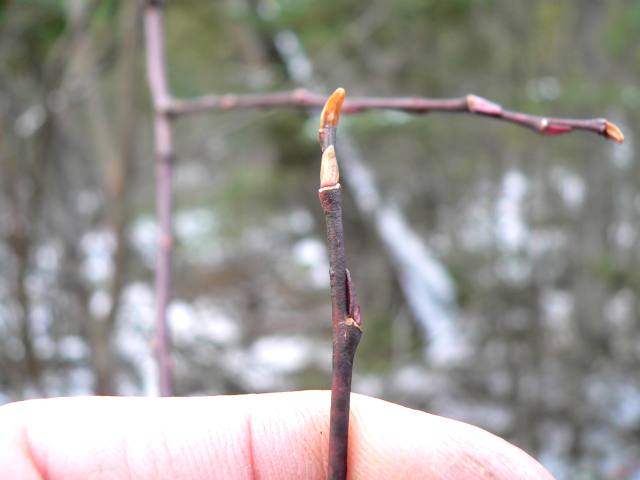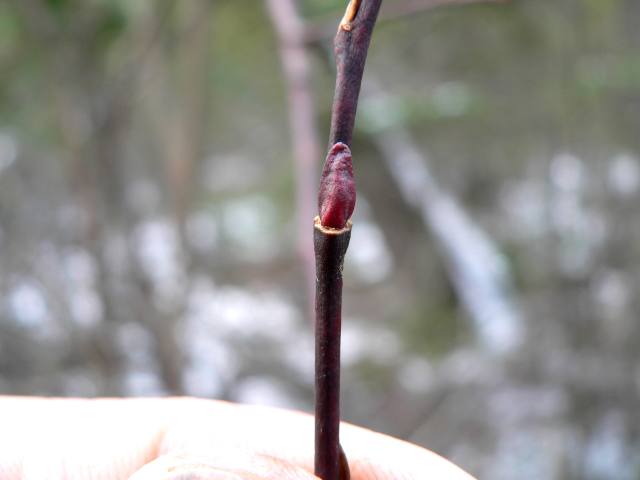Willows Salix spp.
Family: Salicaceae (Willow)
Branching: Alternate
Willows are a large and confusing group of plants. Though some of
them are easily recognized (like the common ornamental, Weeping
Willow), most are distinguished by minute and variable details visible
mainly in the summer. In addition, members of the group hybridize
frequently, adding to the confusion. Those the tree-height
willows are more commonly noticed, the majority of species grow as
shrubs. Some are in fact the most northern deciduous trees in the
world, with their "trunks" growing flat along the ground high in the
Arctic circle. Despite the confusion between species, identifying
a plant as a member of the genus is very simple. At a glance,
most willows have yellow, orange, or sometimes reddish twigs that
easily stand out. Their buds have only one scale, almost
resembling a hood or a duck's bill, and are flattened against the twig.
In the summer, many willows have "stipules" which are small leafy
projections on either side of the bud. Sometimes the scars left
from the stipules are visible in the winter.

The distinctive winter bud of a Willow, one single scale and flattened against the twig

Winter twig of a Willow. A stipule scar is visible beside the lower leaf scar

Another view of a lateral bud

Winter twig of another species

Another willow twig

Another willow twig

Willows are often afflicted by gall-making insects that. These "pine cone" galls are very common.
Back to the
main page
copyright
© 2007 Josh Sayers
please email me with any questions, comments, or errors